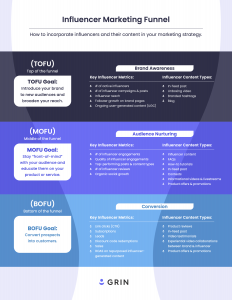Consumers still prefer in-store experiences overall, but columnist Allan Haims believes brick-and-mortar retailers need to take a page from online retailers and learn about their customers by leveraging analytics.
 While online shopping continues to grow and meet consumers’ needs for convenience and competitive pricing, brick-and-mortar stores still ultimately bring in the greatest percentage of retail transactions. Why? Many consumers enjoy and prefer the hands-on and face-to-face experience that brick-and-mortar retailers offer. Personal interaction, instant gratification and salespeople who can help on the spot make brick-and-mortar shopping a timeless experience.
While online shopping continues to grow and meet consumers’ needs for convenience and competitive pricing, brick-and-mortar stores still ultimately bring in the greatest percentage of retail transactions. Why? Many consumers enjoy and prefer the hands-on and face-to-face experience that brick-and-mortar retailers offer. Personal interaction, instant gratification and salespeople who can help on the spot make brick-and-mortar shopping a timeless experience.
Even today’s youngest digital natives, Generation Z (born in the mid-1990s and later), prefer going “old school” when it comes to spending their shopping dollars. A study by IBM and the National Retail Federation found that nearly 70 percent of post-millennials do most of their shopping in brick-and-mortar stores.
While brick-and-mortar retailers have the advantage of face-to-face interaction, online retailers have made hay in another area: analytics. Using their online platforms, they collect data from and about shoppers and mine it for gold — in the form of demographics and shopping habit insights that make up rich customer profiles, which can help them reach customers with personalized and relevant messages and offers.
Brick-and-mortar retailers have the opportunity to learn about their consumers in much the same way by leveraging technology and providing an even greater shopping experience for their customers than online retailers such as Amazon.
While shoppers’ preference for in-store experiences is enough to drive them into brick-and-mortar locations, their connection to smartphones presents an even greater opportunity for retailers. In a survey by mobile loyalty company SessionM, 90 percent of consumers said they use their phone while shopping in stores.
Between their preference to shop in store and their dependence on mobile, shoppers couldn’t be more primed to engage with retailers. Link another piece of technology — WiFi — and brick and mortars are one step closer to baling their own share of that hay.
In today’s digitally connected world, WiFi in public venues (malls, hotels, airports) has moved from beyond an amenity to a utility — a must-have. However, quality issues abound, including slow connectivity, challenging sign-on processes and more.
Additionally, individual retailers largely use their own WiFi for internal internet access, security and energy management. By offering high-quality, free guest WiFi, retailers can connect directly with shoppers; capture relevant data; develop detailed shopper profiles; offer personalized, in-the-moment promotions; and build loyalty by giving shoppers specifically what they want.
Using this technology allows brick-and-mortar retailers to build on the in-store experience shoppers say they prefer by taking a page from online retailers’ playbook — applying analytics to personalize and customize engagement.
The move to adopt the approach is in the early stages but picking up interest. Studies show that consumers are willing to do what it takes to get that in-store personalization — share personal information and shopping interests and behaviors — provided there’s something in it for them.
The opportunity is in the hands of retailers to engage with shoppers on a deeper level.
WiFi delivers what consumers are shopping for
Thanks to WiFi and consumers engaging on mobile devices while shopping, retailers can capture important information and engage shoppers based on prior purchases, frequency, timing and so on. The combination of WiFi and mobile clears a path to in-store, relevant offers that help shoppers make the purchases they actually want.
Consider a shopper who walks into a specialty women’s apparel and accessories store. When she comes into the store, she logs on to the store’s WiFi network with her smartphone. On her initial visit, she will input her email address, but this will not be required on subsequent visits.
On future visits, the retailer will query their marketing database in real time and deliver highly targeted content. For instance, the shopper will see a landing page that includes a “welcome back” message and an offer intended to be of value specifically to her.
It’s critical that this engagement happen instantly; legacy WiFi networks that deliver blank pages and “spinning wheels” not only defeat the purpose, but reflect negatively on the brand.
Analytics also can make customer engagement a team effort across channels. When a shopper looks at denim, sweaters and shoes on a retailer’s website, for instance, that activity becomes valuable data in their customer profile.
Later, when that shopper is in the store, the retailer knows that during the online visit, the shopper put the shoes in the cart, but then abandoned it. The in-store visit is an opportunity to close that sale with a shoe sale offer for that exact shoe delivered to the shopper’s smartphone.
These types of engagement scenarios are largely welcomed by consumers, with 70 percent of shoppers in a TimeTrade survey indicating they’d like brick-and-mortar sales associates to know if they left items in an online cart so they could answer questions.
Time for an updated approach
While shuttering and struggling brick-and-mortar retailers are often quick to peg the internet for their problems, there’s clearly more to it. Otherwise, successful online retailers like Amazon, Warby Parker and Bonobos wouldn’t have hopped the digital fence to engage with consumers where and in a way they want — in a physical store.
Rather than squandering the advantage they have over internet retailers, brick-and-mortar retailers need to be willing to leverage it with an updated, real-time approach to consumer engagement via mobile. Where there’s data and technology, there’s opportunity.
Some opinions expressed in this article may be those of a guest author and not necessarily Marketing Land. Staff authors are listed here.
Marketing Land – Internet Marketing News, Strategies & Tips
(50)










